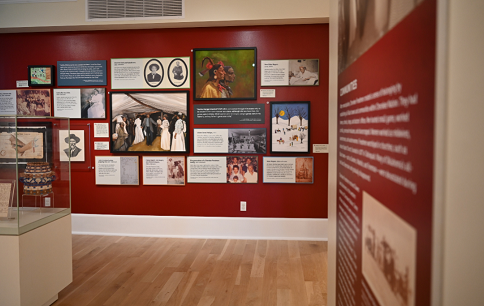
- Details
- By Chuck Hoskin Jr
Guest Opinion. Cherokee history is full of rich moments and great triumphs. Throughout history, the Cherokee people have acted collectively to overcome tragedy, work through trauma, and build a great nation. Telling that story is important. But a great nation is strong enough to tell the whole story, including those times when we inflicted trauma on others.
For Cherokee Nation, what may be our darkest act is when we enslaved other human beings and then deprived them and their descendants of basic rights for over a century. Under our own laws, parts of our economy were built on the backs of enslaved people. We have to recognize that there were times when we imposed trauma on others; we have to acknowledge that we enslaved African-Americans under our own law. If we ignore or suppress that, we do to Freedmen and their descendants the same things that have been done to Cherokee people. Our story has been suppressed; our story has been denied. Any nation is a stronger nation if they tell their whole story: the tragedy, the triumph, and the chapters that are dark and difficult.
The Cherokee story has been suppressed and denied, but we persevered and now can tell that story again – the whole story. That’s why I am honored to announce the newest exhibit at the Cherokee National History Museum in downtown Tahlequah, "We Are Cherokee: Cherokee Freedmen and the Right to Citizenship." This unique experience celebrates the deeply moving history of Cherokee Freedmen in family stories and images shared by their descendants, as well as original artwork inspired by the Freedmen experience.
The exhibit comes out of the work of the Cherokee Freedmen Art and History Project begun by my administration in early 2021. Guided by a group of Cherokee Freedmen community advisors, Cherokee Nation Cultural Tourism worked diligently for more than a year to gather histories, images and documents, alongside nine original artworks by Cherokee Nation artists created specifically for this project.
The exhibit ranges from Cherokee Nation’s earliest known participation in slavery in the 18th century up to the 2017 US District Court ruling that upheld the Treaty of 1866 and reaffirmed Cherokee Freedmen as citizens of the Cherokee Nation. Today, more than 11,800 citizens of Freedmen decent are enrolled in Cherokee Nation, but our work of reconciliation is just beginning.

This exhibit also drives home the importance of treaties. The Treaty of 1866, which says that Freedmen and their descendants shall have all the rights of native Cherokees, is part of a larger document that contains many critical rights and obligations for the Cherokee Nation. When I go to the United States Congress and executive branch officials and call on them to fulfill their treaty obligations, my words are backed by the reality that Cherokee Nation is living up to our obligations. In honoring the rights of freedmen descendants, we honor the treaty promises made by our ancestors
That gives power to our efforts to secure all of our treaty rights, whether hunting and fishing rights, our right to a delegate to the United States House of Representatives, our right to administer justice on our reservation that was recognized in the historic McGirt case, and more. Slowly but surely, we are making the United States finally live up to its treaty obligations, but we could not do that without living up to ours.
Besides, it’s simply the right thing to do. If there's any nation that ought to be leading on the subject of civil rights, it should be the Cherokee Nation. This is a subject that is personal to me and our First Lady, January. We have deep concerns about future generations, about our children and grandchildren, and what kind of world they will live in. For the next generations, we are moving towards greater equality and human rights for everyone.
The exhibit can be viewed in Tahlequah at the Cherokee National History Museum, which is open to the public and free of charge.
More Stories Like This
The Absence of October's Job Report Shows Why Native American Communities Need Better DataTribal IDs Are Federally Recognized. ICE Agents Are Ignoring Them.
Thanksgiving: Part of "Broken Circle Holiday"
Thanksgiving is a Tradition. It's Also a Lie
Decisions About Us, Without Us: Education Dismantling Ignores Tribal Nations
Help us defend tribal sovereignty.
At Native News Online, our mission is rooted in telling the stories that strengthen sovereignty and uplift Indigenous voices — not just at year’s end, but every single day.
Because of your generosity last year, we were able to keep our reporters on the ground in tribal communities, at national gatherings and in the halls of Congress — covering the issues that matter most to Indian Country: sovereignty, culture, education, health and economic opportunity.
That support sustained us through a tough year in 2025. Now, as we look to the year ahead, we need your help right now to ensure warrior journalism remains strong — reporting that defends tribal sovereignty, amplifies Native truth, and holds power accountable.
 The stakes couldn't be higher. Your support keeps Native voices heard, Native stories told and Native sovereignty defended.
The stakes couldn't be higher. Your support keeps Native voices heard, Native stories told and Native sovereignty defended.
Stand with Warrior Journalism today.
Levi Rickert (Potawatomi), Editor & Publisher

